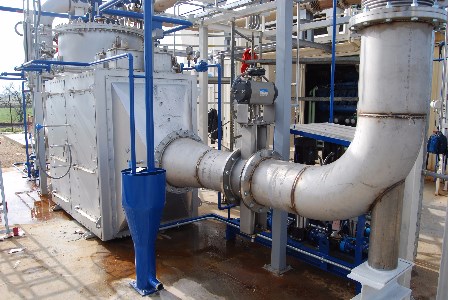
.An industrial heat exchanger is a device that transfers thermal energy between two or more fluids.
One way to help control costs in these industries is by using water heaters.
These devices are typically used for regulating the temperature of process fluid streams and can be found at plants that produce chemicals or power generation facilities like nuclear plants too!
There are many different types of industrial heat exchangers, including plate-and-frame, shell-and-tube, and air-cooled.
Each type has its own advantages and disadvantages.
For example, plate-and-frame heat exchangers are compact but can be difficult to clean; shell-and-tube heat exchangers are efficient but can be expensive to operate, and air-cooled heat exchangers are easy to maintain but can be less efficient than other types.
The first type is the direct fin Romance – these have straight surfaces with no turns or curves.
With both air and water cooling, heat is transferred from one medium to another.
Air coolers have a higher capacity for moving large amounts of this thermal energy over short distances whereas liquid-based systems depend on efficiency with long spans more so than power output per unit mass or other factors involved in the process since there aren’t enough surfaces available that would allow it operate effectively at lower efficiencies.
Industrial heat exchangers use one or more techniques to transfer thermal energy between fluids, including convection, conduction, and radiation.
Some devices have more than one technique built-in.
In a plate-and-frame heat exchanger, the process fluid flows through alternating vertical passages in metal plates while another fluid flows outside of these plates in parallel horizontal channels.
The combination of vertical and horizontal flow along with a change in cross-section causes the two fluids to approach equilibrium.
This method transfers both sensible and latent heat because the variations in pressure caused by flow cause changes in the relative humidity of one fluid with respect to the other.
In an air-cooled heat exchanger, a fan forces ambient air over one or more tubes that contain a process stream.
Where flow restrictions would make other types of heat exchangers impractical.
In addition, because there are no liquids involved in this type of device.
They can handle higher temperature applications than most other types of industrial heat exchangers.
Industrial heat exchangers have many uses in chemical processing plants and power generation facilities including:
Some common examples of industrial heat exchanger components include:
For a specific application, the type and size of the exchanger will depend on what you want to do with it.
There are a variety of different types of industrial heat exchangers, each with its own advantages and disadvantages.
Some of the more common types include:
In addition to the various types of heat exchangers, there are also several different methods used to transfer thermal energy between fluids.
These methods include:
Finally, it is important to note that the selection of an industrial heat exchanger is not always a simple task.
If you’re in the market for an exchanger, it’s best to consult with someone who knows what they are doing.
There is more than one type that will work depending on your application and needs so make sure.
Not only do I get this right but also identify which ones would be perfect before making any purchases!
